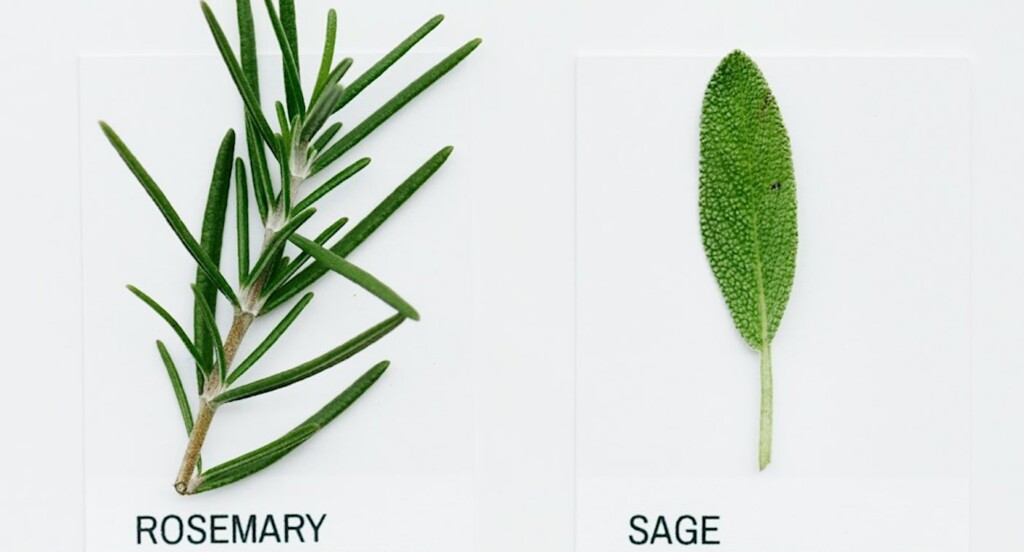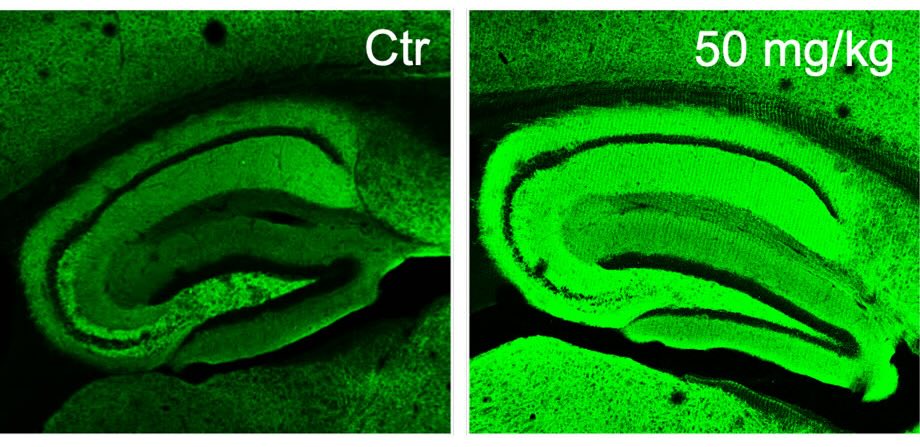 Curated Lifestyle for Unsplash+
Curated Lifestyle for Unsplash+The herb rosemary has long been linked with memory, so it’s fitting that researchers would study a compound found in rosemary and sage for its impact on Alzheimer’s disease, especially the inflammation that often leads to cognitive decline.
Carnosic acid is already an antioxidant and anti-inflammatory compound that works by activating enzymes that make up the body’s natural defense system. While pure carnosic acid is too unstable to be used as a drug, scientists at Scripps Research have now synthesized a stable form called diAcCA—which is fully converted to carnosic acid in the gut before being absorbed into the bloodstream.
The research, published this year in Antioxidants, showed that when diAcCA was used to treat mouse models of Alzheimer’s disease, it led to enhanced memory and synapse density (more connections between nerve cells in the brain).
Because the decline of neuronal synapses is closely correlated to dementia in Alzheimer’s disease, this approach could counteract the progression of cognitive decline. It also reduced key disease biomarkers, including amyloid-β and phosphorylated-tau proteins.
Analysis of tissue samples showed the drug also markedly cut inflammation in the brain. This unique drug is activated by the very inflammation that it then combats and thus is only active in areas of the brain undergoing inflammatory damage.
This selectivity limits the potential side effects of carnosic acid, which is on the US Food and Drug Administration’s “generally regarded as safe” (GRAS) list, easing the way for clinical trials.
“By combating inflammation and oxidative stress with this diAcCA compound, we actually increased the number of synapses in the brain,” says senior author professor Stuart Lipton, MD, PhD, at Scripps Research and a clinical neurologist in La Jolla, California.
“We also took down other misfolded or aggregated proteins such as phosphorylated-tau and amyloid-β, which are thought to trigger Alzheimer’s disease and serve as biomarkers of the disease process.”
 Alzheimer’s-like mouse brain (left) compared to more intense green color (right) showing neuron synapses that underlie learning and memory after treatment – Credit Scripps Research
Alzheimer’s-like mouse brain (left) compared to more intense green color (right) showing neuron synapses that underlie learning and memory after treatment – Credit Scripps ResearchCHECK OUT: Never Too Late to Start Eating the MIND Diet That May Prevent Dementia: New Study of 90,000 People
Lipton’s team previously determined that carnosic acid crosses the blood-brain barrier and activates a pathway that turns on antioxidant and anti-inflammatory genes. But the compound itself oxidizes easily, making it unsuitable as a drug because of its short shelf-life.
In this new study, supported by funding from the National Institutes of Health, Lipton and co-author Phil Baran, PhD, a chair in the Department of Chemistry at Scripps Research, synthesized a range of carnosic acid derivatives and selected diAcCA as the best candidate because of its stability, bioavailability, and other drug-like properties.
Lipton’s group then treated mouse models with the compound over the course of three months. The group examined the mice by testing their spatial learning and memory in behavioral tests and then analyzing brain tissue under the microscope.
“We did multiple different tests of memory, and they were all improved with the drug,” Lipton says. “And it didn’t just slow down the decline; it improved virtually back to normal.” Analysis of tissues also showed increased neuronal synaptic density and decreased formation of phosphorylated-tau aggregates and amyloid-β plaques.
HEALING KITCHEN: Keep Out Your Christmas Spices – They’re Powerful Antioxidants Known as ‘Nutraceuticals’
The mice tolerated diAcCA well. In toxicity studies, the compound even soothed baseline inflammation in the esophagus and stomach as it was converted to carnosic acid.
The group also found that the mice took up about 20% more carnosic acid after ingesting diAcCA than they did after taking plain carnosic acid because diAcCA makes more available in the blood stream than if you took the compound itself.
CATERPILLAR VS CANCER: Caterpillar Fungus Used in Chinese Medicine Slows the Growth of Cancer Cells, Shows New Study
Lipton sees a potential for diAcCA to work in tandem with Alzheimer’s treatments currently on the market. Not only could the drug work on its own by combating inflammation, but “it could make existing amyloid antibody treatments work better by taking away or limiting their side effects” such as a form of brain swelling or bleeding known as ARIA-E and ARIA-H, he says.
PLEASE NOTE: Eating Pomegranates Can Help Alzheimer’s Patients Alleviate Symptoms, Study Says
Lipton hopes diAcCA can be fast-tracked through clinical trials because of its safety profile. He thinks it could also be explored as a treatment for other disorders marked by inflammation, such as type 2 diabetes, heart disease, and other forms of neuro-degeneration such as Parkinson’s disease.
SHARE THIS BRAIN FOOD With Aging Friends On Social Media…
Source link

